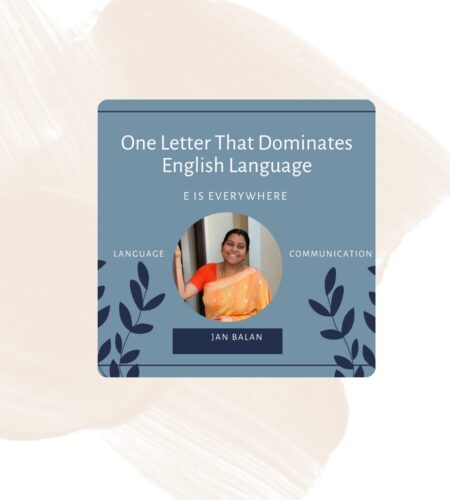E is everywhere. It’s in nearly every sentence, every paragraph, and every conversation we have. In fact, it appears in 11% of all words in English—more than any other letter. Ernest Vincent Wright even wrote an entire 50,000-word novel (Gadsby) without using E, just to prove how hard it is to avoid. Spoiler: it wasn’t easy!
Why Is E So Popular?
The dominance of E isn’t random. It plays a crucial role in the structure of the English language. It appears in high-frequency words like “the,” “be,” and “he.” It’s part of the most common suffixes (-ed, -er, -es) and prefixes (ex-, en-, em-). Even silent E changes pronunciation, turning “hop” into “hope.”
How E Affects Learning
For students, the letter E is a double-edged sword. On one hand, its familiarity makes reading easier. On the other, silent E and vowel combinations (like in “read” and “lead”) create confusion. If your child struggles with spelling, E might be the culprit!
The Silent E Mystery
Silent E is one of the trickiest concepts in English. It transforms words dramatically—compare “hat” and “hate.” It even appears where it doesn’t seem necessary, like in “have” or “come.” But why? Historical spellings and pronunciation shifts left us with silent letters that no longer match spoken English.

Professional Insights: Why it Matters in Writing
For professionals, the power of E extends beyond spelling. It influences readability. Studies show that text with a balanced mix of vowels and consonants is easier to read. Writers, editors, and marketers unknowingly rely on E to make content flow.
How to Use E to Your Advantage
- For Clarity: Break long sentences with E-heavy conjunctions (“even,” “especially”).
- For Engagement: Use E-driven action words like “explore,” “enhance,” and “elevate.”
- For Readability: Avoid overloading with lesser-used letters like Z or Q.
Can You Write Without E?
Want a challenge? Try writing a paragraph without using E. It forces you to rethink sentence structure and word choice. Most people give up after a few lines!
Conclusion: The Letter We Overlook But Can’t Live Without
E is the backbone of English. It shapes how we read, write, and communicate. Whether you’re a student learning phonics or a professional crafting content, mastering E makes all the difference. Next time you write, take a moment to appreciate the small but mighty letter that’s truly everywhere.
For more literature
Subscribe my Youtube channel Jan Balan
Subscribe to our email newsletter to get the latest posts delivered right to your email.

Wow! After reading this article, I’m still in awe of how beautiful the English language is. I never imagined these insights could amaze readers beyond belief. Keep writing more, and thank you for sharing this!
Wow. After reading this article, I’m still wondering how beautiful is English language.
I never thought these would blow out readers mind beyond belief.
Keep writing more & thanks for bringing out this!
Hey! Ther article looks to good. Thank you for the information